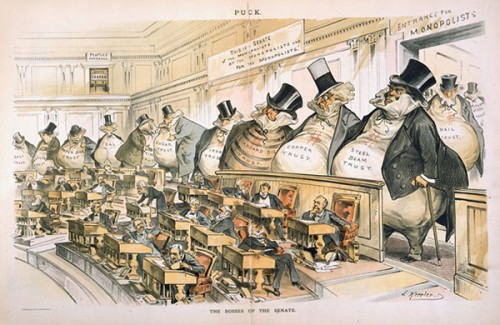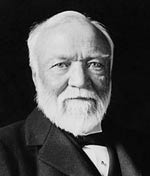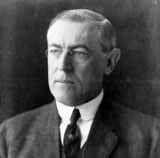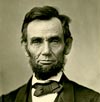The Gilded Age is a period in American society (1870-1900) with rapid economic growth but also characterised by corruption, materialism, monopoly businesses and growing inequality.
The Gilded Age was a time of unbridled capitalism, with some business leaders becoming very wealthy through the consolidation of key industries into powerful monopolies.

Cartoon by Joseph Keppler entitled ‘The Bosses of the Senate’ – suggestion US Congress effectively owned by wealthy industrial bosses.
The term ‘Gilded Age’ implies outer wealth was a mask for the inner corruption and inner poverty. ‘Gilded Age’ is a satire on the rich monopolists, who were accused of gaining wealth through monopoly practices, mistreatment of workers and corruption of the political process.
One of the defining elements of the Gilded Age was the railroad industry. Americans developed a love/hate relationship with the railroads. They transformed society enabling greater travel and economic growth, but they were also run by business magnates who wielded enormous power and could set high prices to farmers, suppliers and travellers. While the owners grew very wealthy, the industrial work was also very dangerous, with numerous accidents and relatively low pay.
Where did the phrase come from?
The phrase Gilded Age was coined by Mark Twain in The Gilded Age: A Tale of Today (1873), which is a satire on materialism and political corruption. Twain probably got the phrase from Shakespeare.
Gild refined gold in Shakespeare
“To gild refined gold, to paint the lily… is wasteful and ridiculous excess.”
– William Shakespeare, King John (1595)
Shakespeare’s phrase talks about the wasteful excess of gilding gold. This is an element of the Gilded Age – the greed of the rich who sought to increase their wealth at the expense of others – even though they were already very wealthy.
Key features of the Gilded Age
- Rapid economic growth, caused by industrialisation and new technologies such as railways and mass immigration.
- Regional disparities between North and South. The Gilded Age applies mostly to the economic growth in the North and West. The Deep South was still coming to terms with the Civil War and did not experience the same rise in living standards and industrialisation.
- Mass immigration. The late Nineteenth Century was the peak age of mass immigration from Europe (the old world) to America (the new world) At its peak, thousands of people a day would be processed through Manhattan alone.
- The growth of business magnates, who came to dominate industries such as steel, railways, mining, construction and oil.
- Growth in super-rich families. In the 1870s, there were approx 100 millionaires. By 1892, that had increased to 4,000. In 1916, this had risen to 16,000 millionaires.
- Poverty and social unrest. The industrialisation created a new workforce, who often worked long hours, for low pay in dangerous conditions. This led to the formation of trades unions seeking to represent and protect workers’ interests.
Positive elements of the Gilded Age
- Local authorities built schools and hospitals.
- Towards the end of the ‘Gilded Age’ and early Twentieth Century, wealthy magnates turned philanthropist to fund libraries, schools and hospitals. It was partly in response to the criticism directed at the monopolists who had become very wealthy.
- US infrastructure. The rapid expansion created much of the infrastructure which would serve America throughout the early Twentieth Century, and even into Twenty-First Century.
- Progressive social movements. The Gilded Age saw the first serious efforts towards enfranchising women, dealing with ongoing racial issues and the first major labour laws to abolish child labour and protect workers’ rights.
- Innovation. From 1860 to 1890, 500,000 patents were issued for new inventions. It could also be described as the Age of Innovation.
- Improved efficiency. An element of the late Nineteenth Century was the adoption of new working practices, which increased efficiency. An influential approach was that of Taylorism – a management technique to increase efficiency.
Negative elements of the Gilded Age
- Poor industrial conditions. Workers in the industrial sector had little protection, and the rate of industrial accidents was very high. Companies offered little or no insurance for their workers who were caught up in serious accidents.
- Social division. The rapid growth came at the cost of growing inequality, with workers seeing a growing divide between owners and workers.
- Industrial unrest. Mass unemployment led to protests, such as the Tompkins Square Riot (1874) and the Haymarket massacre of 1886.
- Corruption and unfair practices. The Gilded Age was an era of monopoly and consolidation; the most successful businessmen had to use underhand techniques to bribe politicians and gain favourable legislation. Corrupt practises were rife through the American political system.
- Social Darwinism. William Graham Sumner wrote an influential book – What Social Classes Owe to Each Other (1884) Sumner argued any form of assistance to the underprivileged weakened their own ability to work and survive in society.
- Conspicuous consumption and a new class system. Economist T. Veblen argued that conspicuous consumption (buying expensive items to impress other people) had become a sign of social status. America was creating a new class system, which many felt was a betrayal of the initial American ideal of breaking away from the European class-based society.
Citation: Pettinger, Tejvan. “Definition of the Gilded Age”, Oxford, UK. www.biographyonline.net. Published: 12th February 2016. Updated 10th February 2017.
The Gilded Age in New York, 1870-1910
 The Gilded Age in New York, 1870-1910 at Amazon
The Gilded Age in New York, 1870-1910 at Amazon
America in the Gilded Age: Third Edition
 America in the Gilded Age: Third Edition at Amazon
America in the Gilded Age: Third Edition at Amazon
Related pages
 Famous people of the Gilded Age (1870-1900) – The great industrialists, such as J.D. Rockefeller, J.P. Morgan and Andrew Carnegie who defined the Gilded Age. Plus other political and cultural figures who were famous in this era.
Famous people of the Gilded Age (1870-1900) – The great industrialists, such as J.D. Rockefeller, J.P. Morgan and Andrew Carnegie who defined the Gilded Age. Plus other political and cultural figures who were famous in this era.



Comments are closed.
*/